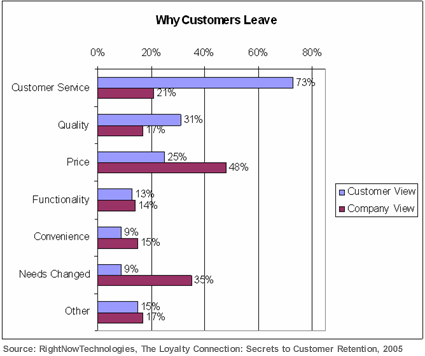“Our future will be our results.” Clarence Gonstead, D.C.
How do we overcome these barriers to extra-ordinary service?
Let’s first define “service.” Service in a professional service firm or professional practice includes two categories:
A. Outcomes. These are the results from the provider.
B. Customer experience. This comes from what the customer experiences as they move along their pathway through your business.
Let’s begin with your goals.
1. Define and Commit to Your Highest Goals.
To create world class outcomes and service, you first need to review your most senior goals. Then, you have to ensure everyone understands them, agrees to them, and commits to doing everything possible to achieve them.
Setting purposeful goals over a lunch meeting does not take into account the sacrifice and effort that will be necessary to achieve them. You may commit to your own goals, but like New Year’s resolutions to go to the gym, you get distracted and discontinue after a few weeks. Some of your team may say they understand the goals – even agree to them – but in fact are only passengers along for the ride.
So, you should review and recommit to your goals each week. Be insistent, allowing for shortfalls now and then, but not compromising in the long run. Be true to your goals or make new ones. Spend time on these three:
a) Mission
This is the purpose of your office. It should be short and to the point and should include something about excellent service and outcomes and helping as many as possible.
b) Core Values
These are the standards for professional behavior and performance. List what values you consider most important in providing health care.
c) Patient Outcomes
Define where you are taking your patients. Relief care only? Or are you taking them further to better health and wellness?
Be true to your goals.
2. Outstanding Outcomes Come from Expertise
Because of your clinical skill, you can produce wonderful outcomes. But can you do even better? Here are some masters in their field as examples of professionals that never stopped improving their craft:
Music: Pablo Casals
Pablo Casals was a cellist – regarded as the best that ever lived. He was born in 1876 in Catalonia, Spain. In 1963 he was awarded the Presidential Medal of Freedom by President John F Kennedy, and in 1971, two months before his 95th birthday, he performed for the United Nations and accepted the U.N. Peace medal.
Casals was talented, but he practiced daily. There is a story about Casals and his training regimen:
He [Casals] agreed to have Robert Snyder make a movie short, “A Day in the Life of Pablo Casals.” Snyder asked Casals, the world’s foremost cellist, why he continues to practice four and five hours a day.
Casals answered: “Because I think I am making progress.”
Food Preparation: Chef Jiro Ono
If you want and value good sushi, Chef Jiro Ono is your guy. He was 92 at the time of this writing. He still works in his small restaurant in Tokyo that holds only 20 people at a time. The waiting list can be over a year. Still, at his age, he works on perfecting every aspect of the sushi, from selecting the exact right fish early at the fish market, to the exact texture of the rice. And every night he considers how he can improve on that day’s production. He is considered the foremost sushi chef in the world. (Jiro Dreams of Sushi, David Gelb 2011 documentary, Wikipedia)
“Once you decide on your occupation… you must immerse yourself in your work. You have to fall in love with your work. Never complain about your job. You must dedicate your life to mastering your skill. That’s the secret of success…… Even though I’m eighty-five years old, I don’t feel like retiring.” Jiro Ono (Jiro dreams of sushi, 2011)
Health Care: Clarence Gonstead
Clarence Gonstead was a chiropractor, born in 1898 and grew up in Wisconsin. In 1923, Dr. Gonstead graduated from Palmer Chiropractic College and began practicing. In 1939, he built a new chiropractic office in Mount Horeb, Wisconsin.
Because of the growth of his practice, a new Gonstead Clinic of Chiropractic was completed 1964. It was a two-level facility with 29,000 square feet. In 1965, adjacent to the new clinic, a full-service motel was built. Gonstead’s reputation as a remarkable chiropractor had spread beyond the United States and he had patients flying in from all over the world. To assist these patients, he set up a limousine service between the Madison, Wisconsin, airport and the Gonstead clinic about 30 miles away. Patients with their own private planes could fly in and land at Gonstead’s personal airport located next to his home on the outskirts of Mount Horeb.
With no marketing, his practice grew so that that he was seeing over 250 patients per day, working six-and-a-half days a week. He often treated his last patient at 2:30 in the morning.
Gonstead studied and improved his craft. He was not, as a founder of a chiropractic college would later say, a “commercial chiropractor.” He was focused on results and said: “Our future will be our results.”
Eventually, he began teaching others his system which is now recognized around the planet as one of the most effective and popular forms of chiropractic technique. He encouraged other chiropractors to study and to “Practice. Practice. Practice. Never stop.”
So, be like Jiro, Pablo, or Clarence! Use “deliberate practice” and look to see how you can improve your skills and methods so that your customers can achieve their goals faster and better.
Never stop improving your craftsmanship.
3. Delegate Administrative Duties to a Goal Driven Team
It is almost impossible to focus on excellent patient outcomes and run a growing business at the same time. You need a strong support infrastructure. This means professional team members that are trained and motivated to apply procedures that are both simple and effective.
Chiropractic works. Not having a smooth-running support structure is the primary element that is in your way from developing your practice to its full potential.
This has been the major focus of our work over the last 30 plus years. We have found that the better the support, the better the outcomes and the happier the doctor and staff.
Improve your people and systems.
4. Create an Upbeat and Supportive Work Environment
“If you go into any organization that’s customer-facing, you can tell in five minutes when the employees are feeling abused. They retaliate on the customers.” Jeffrey Pfeffer, professor at Stanford University
The way the employees are treated directly affects the service that they will provide to the customer.
Sure, work can be stressful at times. Maybe someone snaps at someone else. This happens in any high-performance activity. But as long as we all share the same mission and values, we can address our personal slights to each other and move on.
It is everyone’s responsibility to create a cheerful work environment for each other. If you are having fun, so will our patients.
Smile more — and make work fun!
5. Give Your Patients Information. Educate Them!
“If I’d asked customers what they wanted, they would have told me, ‘A faster horse!’.” Henry Ford.
Of course, you give people want they want – what they consider urgent and important.
But people didn’t want a faster horse, they just wanted faster transportation. Horse, car, airplane… they wanted to get to where they wanted to go – faster. They just didn’t know about how simple, fast, and easy a Model-T was.
You must show them through education that you have what they want and need.
Most offices provide relief. That is what the patient is aware of and willing to pay for. But since you are providing a product that is not tangible using procedures that are invisible, your customer may have a difficult time understanding anything beyond the “quick fix.”
They may know they want more but lack the understanding of what is available.
I know I need to pay my taxes, but what I really want is to pay as little as possible. I also would like to contribute to my children’s education. With some education, my accountant could make me aware of different strategies that would take me to my full goal.
“Customers are thirsty for more information and knowledge,” according to studies by ThinkJar, a customer strategy consultancy.
To deliver your best and complete outcomes, you need your patient’s motivation to do so. It is a path and a partnership that you travel together.
The better that they understand their condition and your unique remedy, the easier it will be for you to help them achieve the best outcome possible.
The more they know — the further they’ll go!
6. Making the Patient’s Experience Extra-Ordinary
Making the patient experience “WOW” takes a team effort.
If studies show that customers discontinue a service mostly because of a lack of interest on the part of the service provider — and your own personal experience validates this fact, then the solution is simple. Just be genuine and interested in your patients. Be empathetic. Take the time to be totally present, in the “now,” and have “present time consciousness.” You only have 1 patient, and that is the one you are with, or about to see.
Then, when you practice with your team at team meetings, focus on this: the level of honest interest, curiosity, and care.
Practicing scrapes off the “barnacles” that attach to us all as we soldier through our work days. Here are some training tips for working on improving customer service with your team:
a) Review the Customer’s Journey
Lay out the pathway to and through your services. Do this with your team.
This begins even before your patients contact you. Who are they? Mom’s, seniors, kids? What brings them to you? What other solutions have they tried before they came to you? Get to know them and empathize with their condition.
b) Flow Chart
Then, list the sequence of actions, or a flow chart of what occurs from first contact through their first service and leaving. Drawing this out with your team will expose many areas for improvement.
c) The Walk-Through
Against this flow chart, you and your team can now look at where you can add more benefits for your customers.
I have found that practicing a “walk-through” reveals many hidden plusses – and embarrassing weaknesses, in service. The doctor or a team member takes on the role of a customer. They then travel some portion of the patient pathway with the usual team in their roles, acting as if they are dealing with an actual patient.
You are guaranteed to find areas where service can be improved.
d) Add More Value
Bain Consulting, an international management company, identified 30 different elements of value relative to consumer needs in an extensive study. They categorized these customer values into four categories:
-
- Functional values, such as quality, variety, time efficient, simplicity, reduces effort, and reduces cost.
- Emotional values, which included entertainment and fun, aesthetics, rewards, and attractiveness.
- Life Changing values which included affiliations, community, and greater purpose.
- Social Impact. An industry example was Tom’s shoes, a shoe company that donates a pair of shoes to underprivileged for every pair purchased by a customer.
In their research, Bain noticed that the companies that had the highest ratings on the most values had more loyal customers than the rest. They also found that these companies had faster revenue growth than others.
Good service pays. Great services pay even better!
With this in mind, look again at your flow chart and notice where you can add more value to your services. Start with the direct service to your customer, the “functional” areas of your business. For example, how could your customers receive their services:
- Faster
- More conveniently
- Less expensively
- With less effort
- With greater simplicity
- Receive child care while in the office
- And also acquire a understanding their condition and their care program
In the next category that Bain used, what kind of “emotional” values could you add, including:
- Fun and entertainment
- Rewards
- Design/Aesthetics
- Attractiveness
- Reduced Anxiety
The next two categories relate to higher purposes. “Life changing” and “Self-transcendence,” including:
- Affiliation/belonging – Create a wellness or health club, have patient barbeques and get togethers.
- Social Impact – Schedule yearly events to help the less fortunate, clean-up drives, and health and environmental causes.
In the years to come, Customer Service will take the lead in all your marketing efforts and will be the factor that sets you apart from comparable alternatives.
Edward Petty










